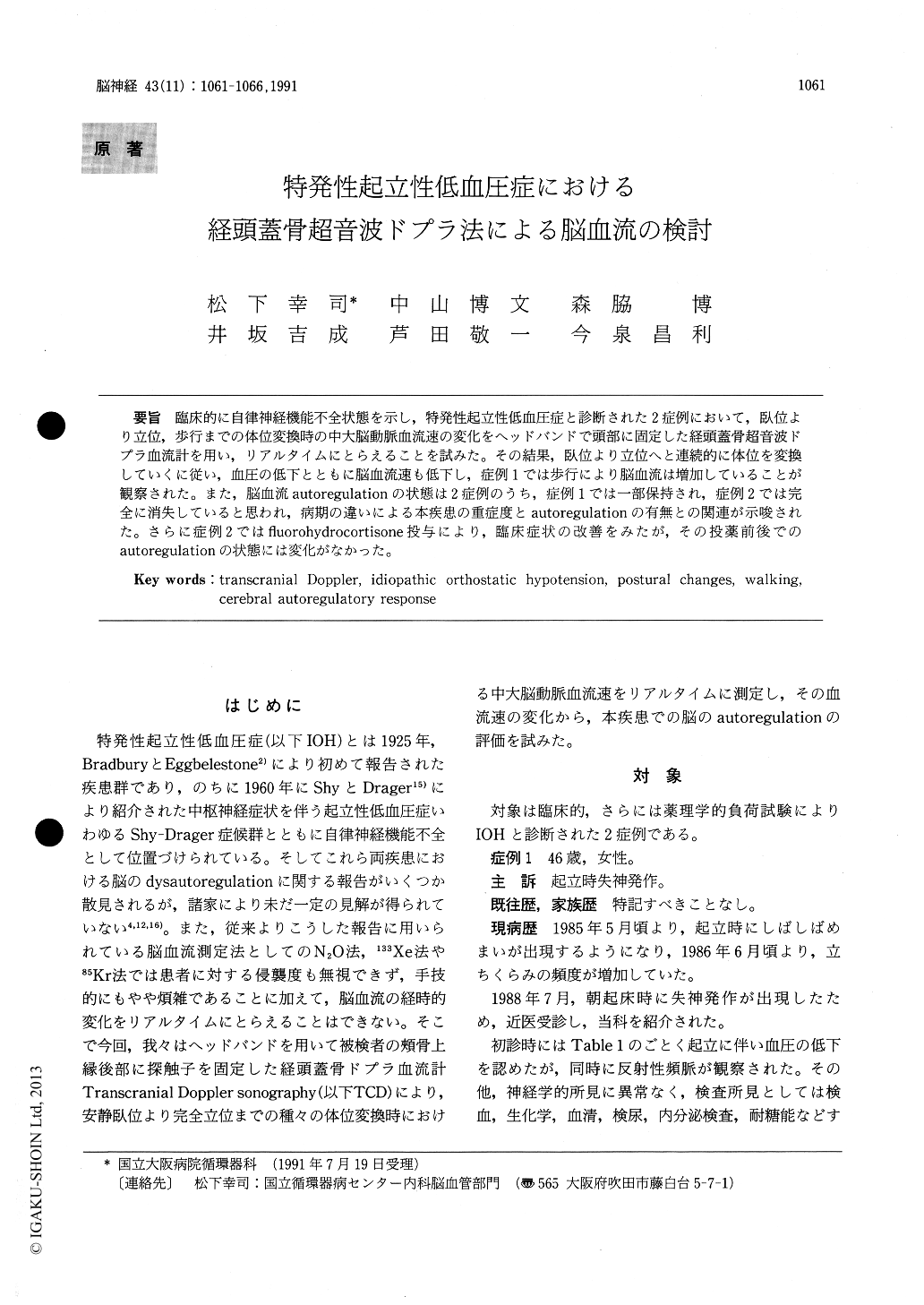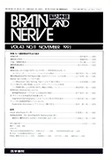Japanese
English
- 有料閲覧
- Abstract 文献概要
- 1ページ目 Look Inside
臨床的に自律神経機能不全状態を示し,特発性起立性低血圧症と診断された2症例において,臥位より立位,歩行までの体位変換時の中大脳動脈血流速の変化をヘッドバンドで頭部に固定した経頭蓋骨超音波ドプラ血流計を用い,リアルタイムにとらえることを試みた。その結果,臥位より立位へと連続的に体位を変換していくに従い,血圧の低下とともに脳血流速も低下し,症例1では歩行により脳血流は増加していることが観察された。また,脳血流autoregulationの状態は2症例のうち,症例1では一部保持され,症例2では完全に消失していると思われ,病期の違いによる本疾患の重症度とautoregulationの有無との関連が示唆された。さらに症例2ではfluorohydrocortisone投与により,臨床症状の改善をみたが,その投薬前後でのautoregulationの状態には変化がなかった。
Transcranial Doppler (TCD) was utilized to esti-mate the cerebral blood flow velocity during postur-al changes or walking in two patients with idiopath-ic orthostatic hypotension (IOH). The probe of TCD was attached tightly to the temporal skull with a headband to measure the flow volocity of middle cerebral artery (MCA) . The patients' postures were altered passively by a tilting table or actively bystanding up or walking with their own feet. The TCD study clearly demonstrated a complete loss of autoregulation in Case 2 and an incomplete impair-ment of autoregulation in Case 1. In both patients, the blood pressure dropped markedly at a standing position, and MCA flow velocity decreased accord-ingly resulting in manifestation of dizziness. In Case 1, the blood pressure was elevated during walking, and MCA flow velocity increased leading to the improvement of ischemic symptoms. In Case 2, the TCD study was repeated after administration of fluorohydrocortisone, a mineralcorticoid agent,which ameliorated clinical symptoms. The results, however, indicated no improvement of autor-egulatory response. The amelioration of symptoms was attributable to the elevation of blood pressure levels. Our study indicates the capability of TCD to estimate cerebral blood flow alteration during pos-tural changes or walking. The TCD appears to be useful for evaluating the autoregulatory response and effectiveness of therapy in patients with orthos-tatism, like IOH.

Copyright © 1991, Igaku-Shoin Ltd. All rights reserved.


